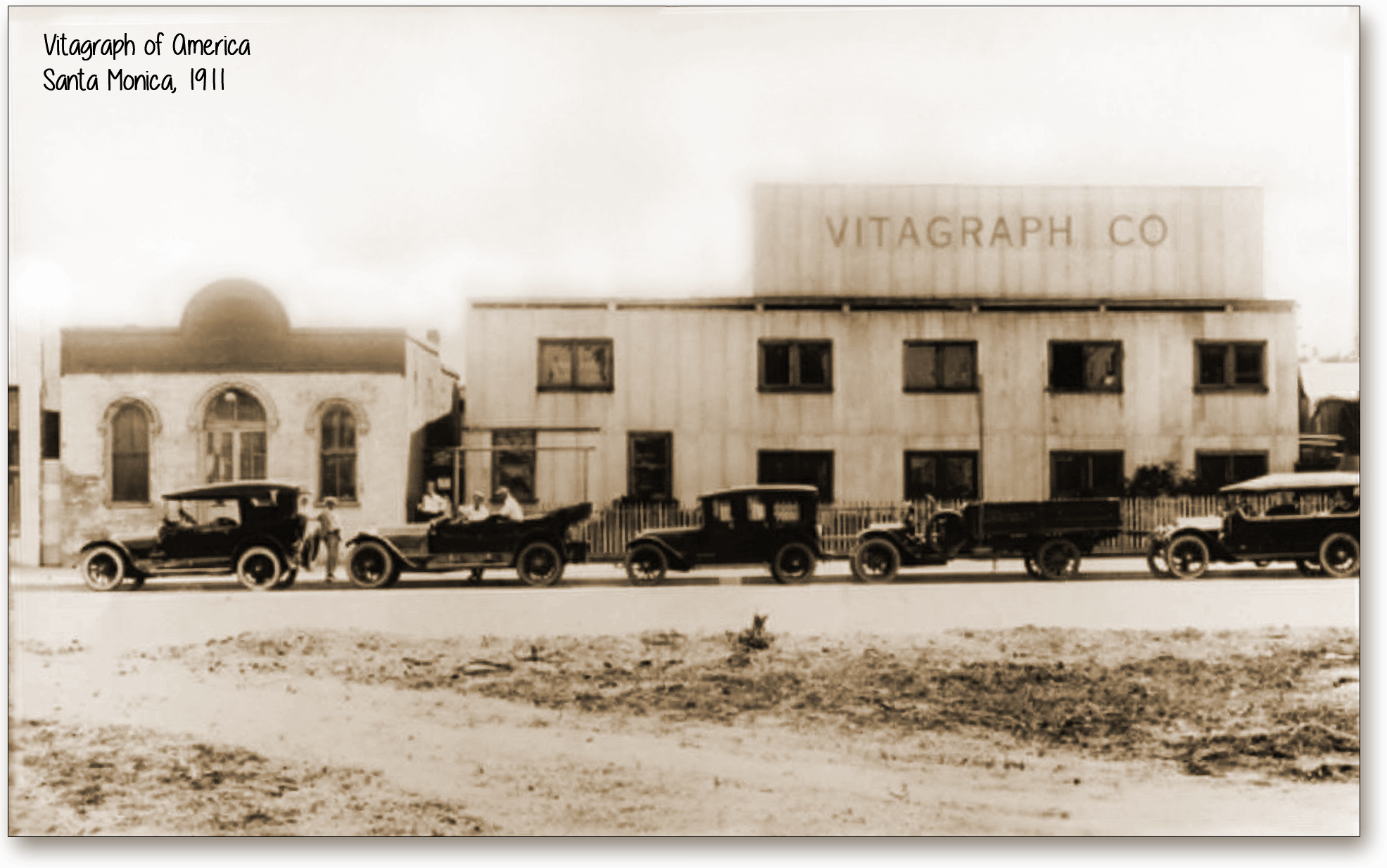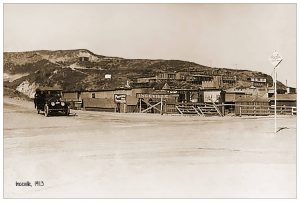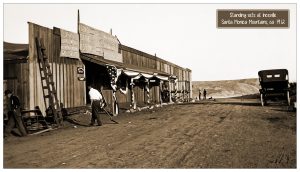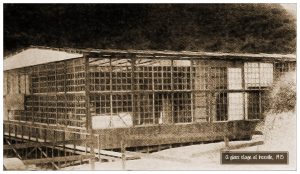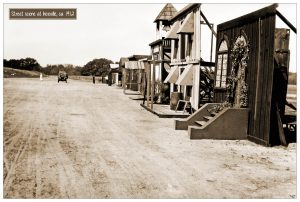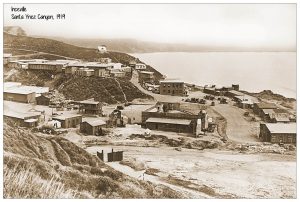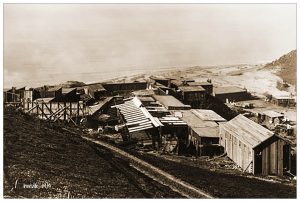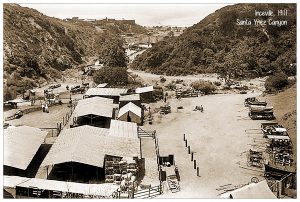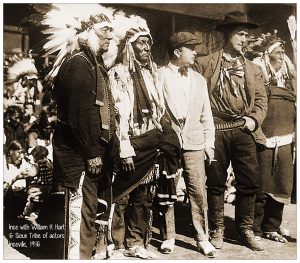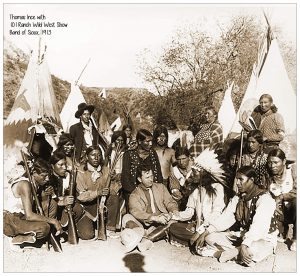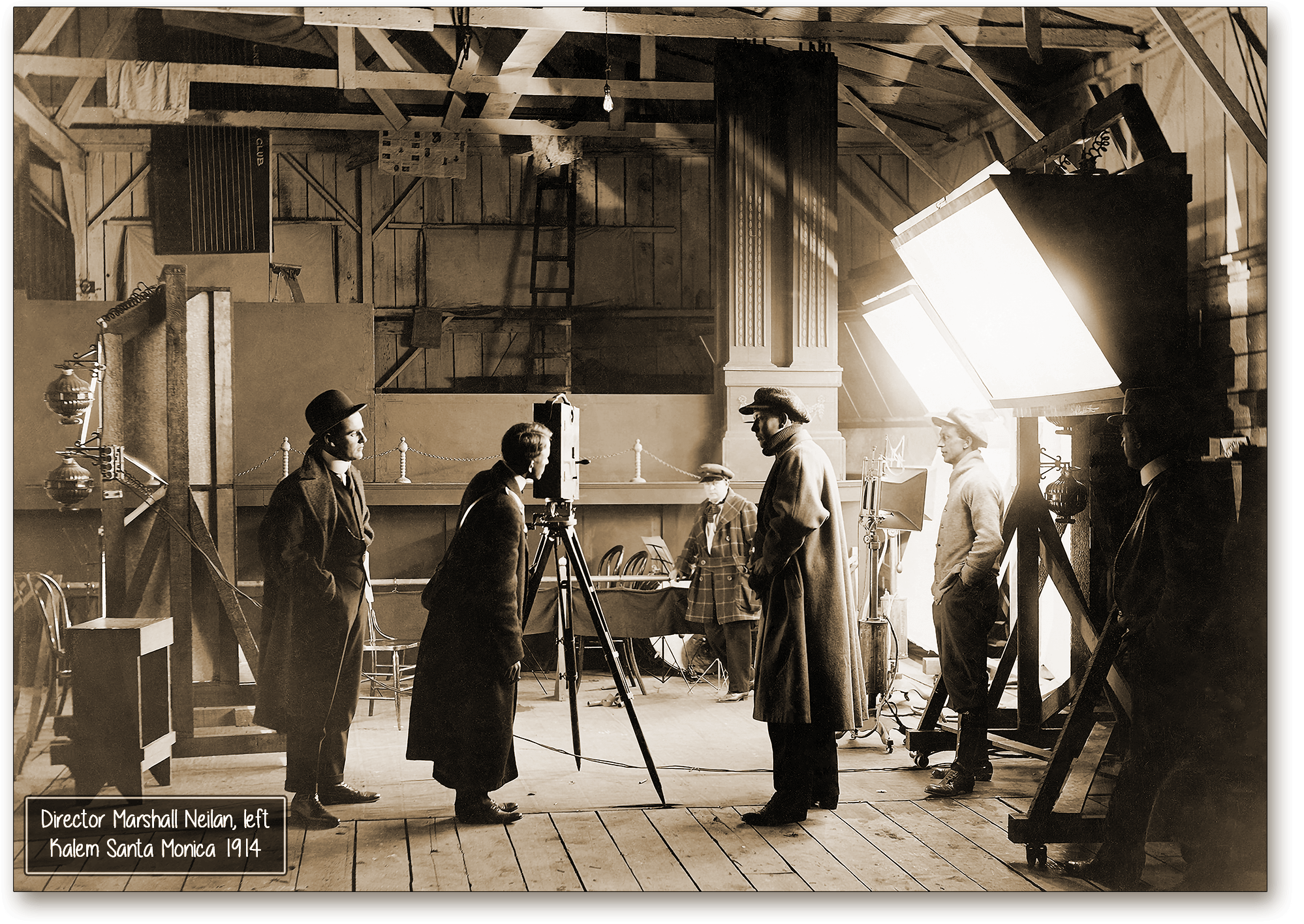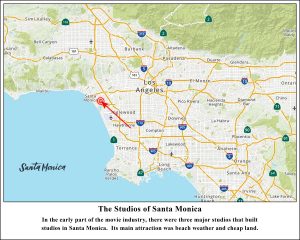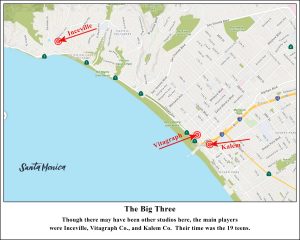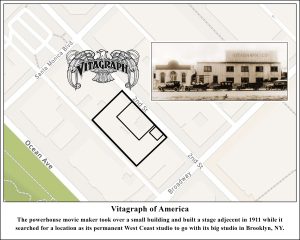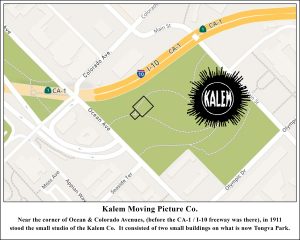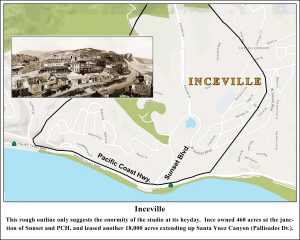An Early Studio Center
Santa Monica
Even today, Santa Monica is the home to many entertainment companies, including M-G-M
Vitagraph of America
Inceville / Bison 101
Kalem Company
United Photoplay
Biograph Company
Essanay Film Co.
Click to enlarge

Vitagraph Company of America
1438 2nd St., Santa Monica
Site active 1911-1915
Just a block from the warm waters of the Pacific Ocean stood the first of Santa Monica's four studios. It belonged to Vitagraph of America, a behemoth of America's early movie making companies.
Vitagraph was founded by J. Stuart Blackton and Albert E. Smith in 1897. Its first studio was built in Manhattan, New York, and they went through a series of small studios before landing at their flagship studio in Flatbush. The company was initially called American Vitagraph Company and later changed to Vitagraph of America and known simply as Vitagraph Company. By 1907, it was the most prolific American film production company with some of the industry's biggest stars. It was bought by Warner Bros. in 1925.
After a brief stop at 1415 Ocean Ave. they bought Santa Monica's oldest building (which still stands today and was Santa Monica City Hall at one point in history). Originally it was to be very temporary while they looked for a more permanent location, they ended up staying for 4 years, adding to he studio with a large stage.
While in Santa Monica, the company produce many movies and the players and crew took full advantage of living and working so close the Pacific. The small studio lot measured 200' x 150' and could support two shooting units simultaneously, both indoors and outdoors.
Finally for the headquarters of their West Coast operation they chose a 29 acre piece of land in East Hollywood and in 1915 they abandoned the Santa Monica lot. There they thrived with their bi-coastal studios until 1925 Vitagraph they were purchased by the fledgling Warner Brothers Company.
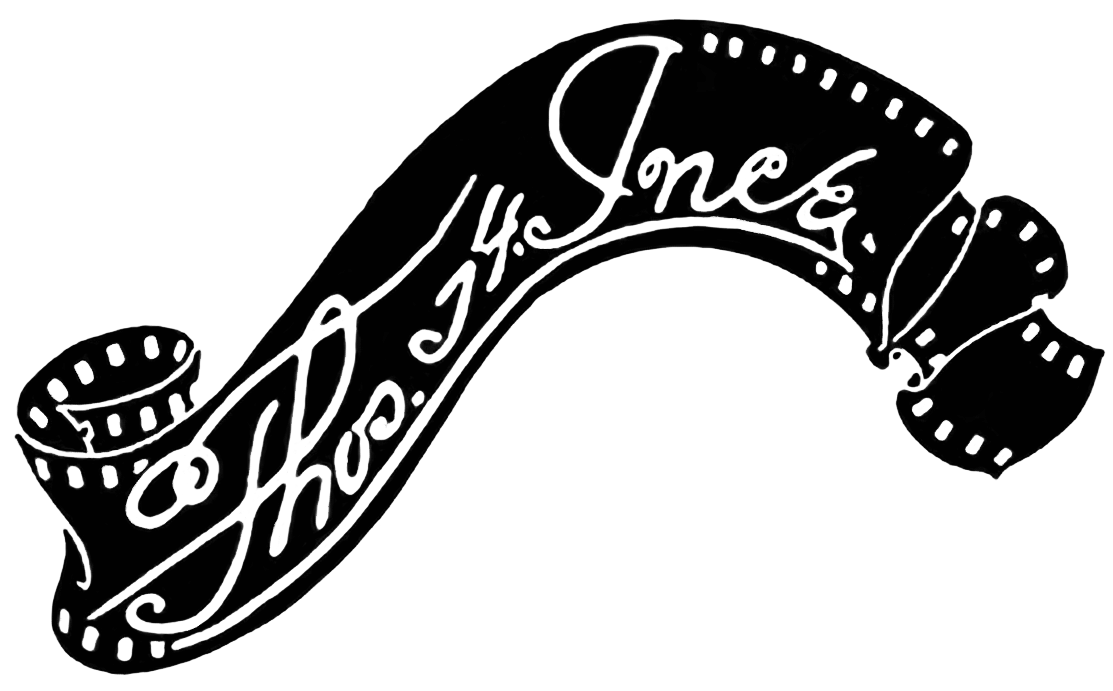
Inceville
Santa Ynez Canyon, Santa Monica Mountains
Active as Inceville 1911-1916
Active 1916-1919 as Hartville
Active 1919 as R-C Village under ownership of Robertson-Cole
The largest studio in the Hollywood and Los Angeles area. The largest in California. The largest studio in the nation, the largest in the world. The largest studio in the history of motion pictures. The largest there will ever be.
Initially dubbed Bison Ranch, Inceville was the second studio of the Bison 101 unit of the New York Motion Picture Company (NYMPC) and the first built by Ince.
Ince was hired by NYMPC, a unit of the newly formed Universal Pictures, to take over the movie unit and put them on the map. When he arrived at the Edendale studio he found a group of ramshackle buildings on a tiny one acre lot. Wanting to make great westerns, he knew he would need a modern studio and more space. Much more space. So he found a 460 acre tract of land in Santa Ynez Canyon in the Santa Monica Mountains and moved the Bison unit from the tiny Edendale lot. He constructed streets and towns of all types, including set aplenty for making his beloved cowboy movies.
He contracted with the huge 101 Ranch and Wild West Show out of Oklahoma and brought their actual Cowboys and Indians plus their cattle, horses, and other livestock, to Inceville, where the Indians erected their tee pees and set up their encampment. They provided stock players and realism to his cowboy and Indian movies.
By 1912, making successful movies at a furious pace, Ince was able to save enough money to buy the 460 acres, renaming it Inceville. He then managed to talk the NYMPC owners into leasing another 18,000 acres. There he built a state of the art studio, with not only plenty of standing outdoor western sets, but glass stages, dark stages, film processing labs, production offices, props and costumes warehouses, a construction department, and a commissary to feed the hundreds of actors and crew he kept on staff. Sets were not only of the Western kind, but also urban city-type sets, estates, and mansions...anything a film crew could want to make any type of movie.
Ince made hundreds of movies at Inceville.
Technically not in Santa Monica, but just northwest, Inceville was located at the junction of what we now know as Pacific Coast Highway and Sunset Blvd., but then was just some dust-filled wheel rutted roads in an inhospitable location.
Inceville was the first of three studios that Thomas Ince would own.
When Ince built a studio in Culver City in 1919 and formed Triangle Pictures with partners D.W. Griffith and Mack Sennett and moguls Harry Aitken, Adam Kessel, and Charles O. Baumann, Inceville was rechristened Triangle Ranch and used as a backlot for the new studio.
After Ince left Inceville it was used by his friend, William S. Hart, and named Hartville. Later it was sold to Robertson-Cole and renamed R-C Village. Finally, in 1922, the whole place caught fire and burned to the ground. Its founder, Thoms Ince, would die a mere two years later at age 44.
Additional Reading

Kalem Company
Ocean Ave. and Colorado Ave., Santa Monica
Active 1911-1913
Two years after establishing its first California studio in Verdugo Canyon, Kalem embarked on an expansion by opening this tiny lot in Santa Monica. This small two room studio just a short walk from the beach was used for only a short time. In an abandoned railway station, it was typical of Kalem's reluctance to invest in their company, its facilities, and its product.
During its four year stay, the studio director was first timer Marshall Neilan, who would go on top considerable acclaim and own his own studio for a brief time. Their major star was Ruth Roland who became a very popular actress. .
In 1915 Kalem moved into a new studio in Culver City. Rival Essanay Company moved in to shoot a single picture before moving to Niles, CA to build their permanent West Coast studio.
Other Santa Monica Studios
Biograph Company
Rumors suggest that the giant Biograph Co. set up temporary shop at 312 California St. in Santa Monica (ca 1910), while establishing its California presence at 906 Girard St. in downtown LA. I find no corroborating evidence or any other information, so its existence is in doubt.
Essanay Film Co.
A single reference in a book on Essanay suggests that G.M. Anderson, owner, Jess Robbins, director, and Ben Turpin, company star, set up briefly in Santa Monica. Location is unknown.
National Photoplay
The only evidence of its existence is an entry in a trade magazine, Moving Picture World 1917. It simply lists the name and the city. Possibly occupied one of the existing studios, as they were, by then, vacant.




